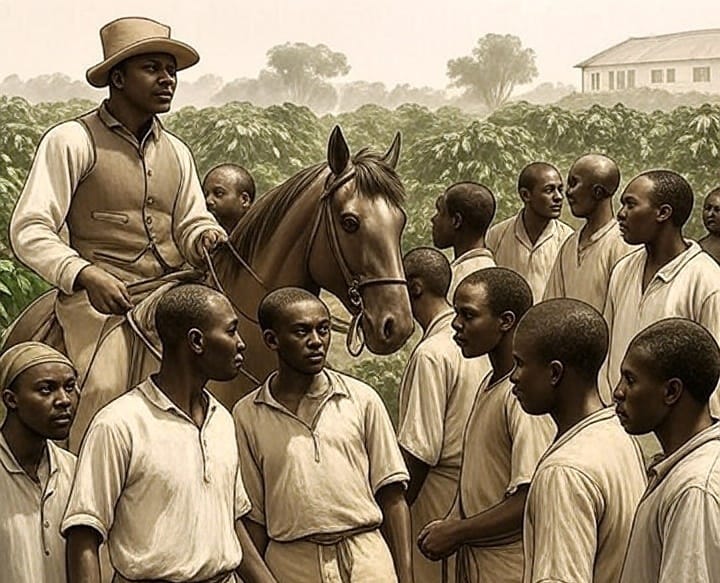🇲🇿 Nationalism in Mozambique: The Long Road to Independence
Mozambique was among the last African nations to break free from colonial rule. Its journey to independence was a protracted and violent struggle against one of Europe’s most entrenched colonial powers.
⏳ Why was Mozambique’s Decolonization So Slow?
Portugal held onto its colonies long after other European powers had left. The reasons for this delayed independence were deeply rooted in Portugal’s own circumstances and Mozambique’s value.
- 💰 Economic Dependence: Portugal was a poor, backward nation that relied heavily on Mozambique for revenue, raw materials, and as a market for its goods.
- 👨🌾 Settler Presence: A significant number of Portuguese settlers had invested heavily in farming, mining, and other sectors and were reluctant to leave.
- 🤝 External Support: The colonial government received crucial support from South Africa and Rhodesia, including:
- Uranium for making bombs to suppress riots.
- Electricity and assistance to build the Caborra Bassa Dam on the Zambezi.
- 🗺️ Geographic Challenges: Mozambique’s large size and poor infrastructure (roads, communication) hampered the organization and spread of nationalist ideas.
- 🛑 Repression & Racism: The Portuguese state employed rigorous censorship, surveillance, and brutal security forces to discourage dissent. They feared that educating Africans or granting equal status would lead to their overthrow.
✊ Factors that Ignited Nationalist Sentiment
Despite the repression, several injustices fueled the fire of resistance:
- Replacement of Traditional Rulers by Portuguese administrators.
- Massive Land Alienation, pushing Africans to unfavorable land.
- Severe Economic Exploitation, including widespread forced labour.
- Rampant Racial Discrimination, where even poor Europeans competed for and won “simple jobs” over Africans based on race.
- Restrictions on Freedoms, particularly under General Salazar (1920s), who enforced strict censorship.
- Cruel Treatment by Security Police, who crushed any unrest ruthlessly.
⚔️ The Peak of Nationalism: The Rise of FRELIMO
The struggle moved from protest to armed liberation.
- 1960: The Mozambican-Makonde Union (MANU) was formed. A peaceful protest organized by MANU ended in a massacre of over 600 Africans.
- 1962: Exiled groups, invited to Tanzania by Mwalimu Julius Nyerere, united to form the Liberation Front of Mozambique (FRELIMO), under President Eduardo Mondlane.
- 1964: After guerrilla training in Tanzania, FRELIMO launched a full-scale war against the Portuguese.
- 1969: A major blow—FRELIMO leader Eduardo Mondlane was assassinated.
- 1970: Samora Machel was elected as the FRELIMO army commander.
- 1974: A military coup in Lisbon overthrew the regime, and the new government was against colonial wars.
- 1975: INDEPENDENCE! A transitional government was set up, and power was handed over. Samora Machel became the first president.
A Poignant Footnote: Samora Machel died in a 1986 plane crash blamed on the South African apartheid regime. His widow, Graça Machel, later married South African President Nelson Mandela in 1994.
🔥 Why was the Struggle Necessarily Violent?
Peaceful decolonization was not an option due to:
- The unbearable depth of suffering of the people.
- The extreme harshness of the Portuguese administration.
- Portugal’s complete unwillingness to let go.
- Widespread exploitation of resources and land alienation.
🏆 Factors that Led to FRELIMO’s Victory
A combination of internal strength and external support secured victory.
- Strong Leadership: Well-educated leaders like Mondlane provided strategic direction.
- Overwhelming Continental Support: Moral and military aid from Tanzania, Zimbabwe, DRC, and the OAU.
- Rapid Growth: FRELIMO expanded from 250 fighters (1964) to 35,000 (1967).
- Favorable Terrain: The forested environment was perfect for guerrilla warfare.
- Local Support: The population provided crucial logistical support and intelligence.
- International Backing: Military aid from communist states (USSR, China).
- Effective Strategy: A systematic, bit-by-bit liberation approach that won hearts and minds.
- Inclusive Force: The army included all tribes, sexes, and ages. Women played vital roles as fighters, spies, and supporters.
⚠️ Challenges Faced During the Liberation War
The path to victory was fraught with difficulties.
- Severe Supply Shortages: Government forces blockaded basic needs from reaching fighters.
- Church Opposition: The church labeled FRELIMO a “terrorist organization,” turning some faithful against them.
- Internal Divisions: Ideological differences and selfish ambitions caused splits (e.g., the breakaway of COREMO in 1965).
- Assassination of Leadership: The killing of Eduardo Mondlane in 1969 was a major setback.
- Portuguese Brutality: atrocities like the Wiriyamu Massacre (400 civilians killed in 1972) were used to terrorize supporters.
- Regional Opposition: Combined opposition from the apartheid South African and Rhodesian regimes.

